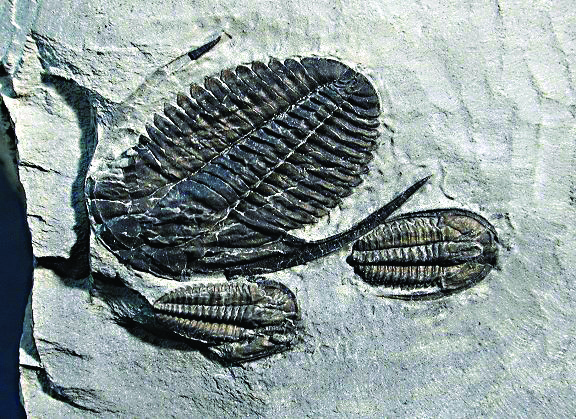A Kootenay find of world-class proportions could have a far-reaching impact, not only on the scientific community, but on the local economy as well.
“This has the quiet potential within 10 to 20 years to be a quiet factor in the gross domestic product of the Columbia Valley,” former Kootenay-Columbia MP Jim Abbott said.
“We have found what is being described as one of the best late Cambrian fossil sites in the world,” self-taught geological explorer, and site discoverer Chris Jenkins said.
About 10 years ago, Jenkins, and friend Chris New set out to find new fossil sites in the area of the Bull River, based on “a number of clues.”
They almost immediately found a remarkable concentration of trilobite fossils that date back hundreds of millions of years at a number of sites in the area.
While Jenkins made the finds several years ago, only recently has he come forward with this information.
Although the last few trilobites went extinct about 245 million years ago, they are one of the best-known and most-studied groups of fossil arthropods, according to a University of California Museum of Paleontology website.
“We have found dozens of new trilobite species,” Jenkins said. “Not only that, there is almost unlimited area left to investigate—in one spot there are thousands of feet of clay banks, and at every level trilobite fossils exist.”
What has many scientists particularly excited is the discovery of a concentration of fossils that contain soft-body materials, which in such density had only been found in two other places in the world; the well-known Burgess Shale site in Yoho National Park and a site in China.
However, since the Burgess Shale site is in a national park, Abbott says that for all intents and purposes “you cannot do science in the area.”
That’s where Abbott — in town to discuss the find with local Rotarians — comes in.
Jenkins had approached Abbott about eight years ago, while he was still a member of parliament, about how to get his fossils into the public domain. Abbott, who has since retired, has now approached the Burgess Shale Geoscience Foundation (BSGF) about taking control of the fossils, with Jenkins’ blessing of course.
“Chris’s finds at these 10 different sites provide an opportunity for highly qualified, highly respected scientific gurus in the Burgess Shale to have live sites to study,” Abbott said.
“I have massive respect for what Chris has done—he’s the hero of this piece. He is saying that he has control (of these fossils) but he doesn’t want control, because he wants to do something responsible with it.”
The obvious question would be why they would not pass the site control to the government. Abbott says while the government is not the villain, their particular set of rules and procedures would greatly limit the public exposure these fossils receive; public exposure, being exactly what Abbott wants.
Jenkins has been touring through School District 6 with his discoveries, and Abbott says this is a massive opportunity to get local area students interested in the field of paleontology.
“The important thing in education is to whet kids’ curiosity,” Abbott said.
“This will do exactly that. In terms of lifelong learning, students from the Kootenays will have something unique to the Kootenays.”
Abbott also talked about the possibilities of integrating the finds into the curriculum, with field trips and palentological clubs and classes within the realm of possibility. Beyond the field of education, the potential for international visitors to come and visit the site is also an exciting possibility.
Abbott mentioned the Canadian Rockies International Airport, and speculated whether it could be expanded to become a truly international airport if needed.
Since U.S. trilobite fossil site availability has been curtailed, that also opens the possibility of American scientists and tourists coming to visit the site.
“There are many parts that have to fit together,” Abbott said. “We’re just trying to identify the parts and how they assemble.”
